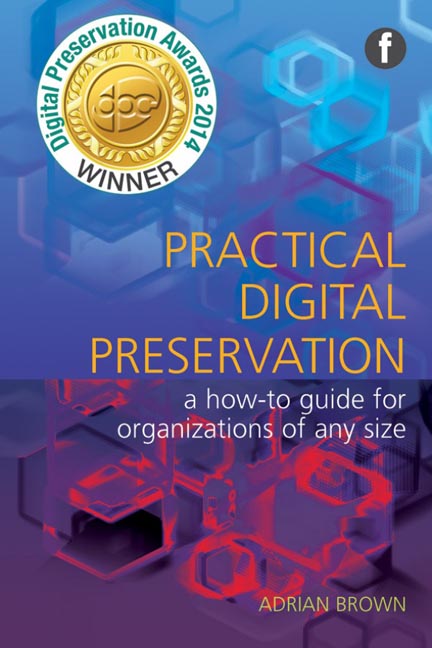Book contents
- Frontmatter
- Contents
- Acknowledgements
- Glossary
- 1 Introduction
- 2 Making the case for digital preservation
- 3 Understanding your requirements
- 4 Models for implementing a digital preservation service
- 5 Selecting and acquiring digital objects
- 6 Accessioning and ingesting digital objects
- 7 Describing digital objects
- 8 Preserving digital objects
- 9 Providing access to users
- 10 Future trends
- Appendices
- Bibliography
- Index
8 - Preserving digital objects
Published online by Cambridge University Press: 08 June 2018
- Frontmatter
- Contents
- Acknowledgements
- Glossary
- 1 Introduction
- 2 Making the case for digital preservation
- 3 Understanding your requirements
- 4 Models for implementing a digital preservation service
- 5 Selecting and acquiring digital objects
- 6 Accessioning and ingesting digital objects
- 7 Describing digital objects
- 8 Preserving digital objects
- 9 Providing access to users
- 10 Future trends
- Appendices
- Bibliography
- Index
Summary
Introduction
This chapter addresses the very heart of digital preservation – the strategies and techniques required to ensure that digital information remains accessible and usable over the long term. It is a complex issue, which remains the subject of wide-ranging international research, and this chapter focuses on practical, cost-effective approaches suitable for smaller organizations.
It begins by examining the goals of preservation, and the nature of digital information, before considering the main threats which it seeks to overcome. It then summarizes the key concepts and approaches, before a detailed consideration of preservation techniques and their practical application.
The goals of preservation
Before considering the process of digital preservation in detail, it is worth taking a moment to reconsider the fundamental objective of preservation, in the physical or digital world. This can be very simply stated as follows:
To maintain the object of preservation for as long as required, in a form which is authentic, and accessible to users.
It is for the object's custodian to determine how far into the future that requirement extends; in many cases it will be in perpetuity. Similarly, they are the final arbiter of what constitutes an authentic and accessible form. Authenticity and accessibility must be determined with reference to the constraints of the object's creators, and the needs of its current and future users.
The concept of authenticity must be the informing principle behind any approach to preservation. Authenticity is the assurance that a thing is what it purports to be: if we are unable to demonstrate this for the digital objects in our care then our preservation activities are, frankly, entirely worthless. While different disciplines may require proof of authenticity with varying degrees of rigour – such as the demands of legal admissibility or scientific discovery – all require supporting evidence. This must be accumulated and managed through time, alongside the objects to which it attests, to provide confidence that those objects remain as amenable to investigation, analysis and interpretation as on the day they were created.
While the concept of authenticity described in this book is firmly rooted in archival approaches, it is equally applicable to the preservation of every kind of digital object, and every curatorial tradition.
- Type
- Chapter
- Information
- Practical Digital PreservationA how-to guide for organizations of any size, pp. 193 - 242Publisher: FacetPrint publication year: 2013



